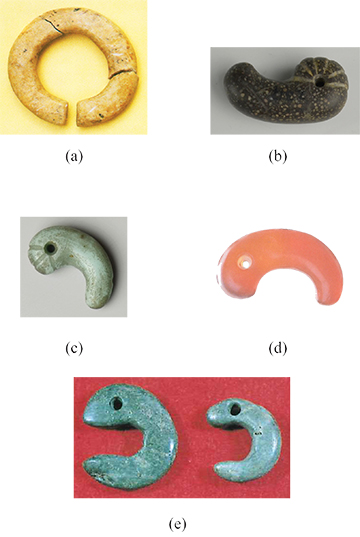
This issue of Asian Perspectives also features the following scholarly works: Continue reading “Asian Perspectives, vol. 57, no. 1 (2018)”

This issue of Asian Perspectives also features the following scholarly works: Continue reading “Asian Perspectives, vol. 57, no. 1 (2018)”
Volume 23 #2 of China Review International begins with two featured reviews and a response, along with 20 more reviews of scholarly literature in Chinese studies.
Law in the Mongol and Post-Mongol World: The Case of Yuan China (reviewing Bettine Birge’s Marriage and the Law in the Age of Khubilai Khan: Cases from the Yuan Dianzhang) Reviewed by Macabe Keliher
Imaginary Identities and Han Nationalism: A Consideration (reviewing Kevin Carrico’s The Great Han: Race, Nationalism, and Tradition in China Today) Reviewed by Rebecca E. Karl
Binbin Yang’s response to Ma Xu’s review of Heroines of the Qing: Exemplary Women Tell Their Stories, in China Review International vol. 22, no. 2 (2015)
Tonio Andrade’s Sea Rovers, Silver, and Samurai: Maritime East Asia in Global History, 1550-1700 (available from UH Press) Reviewed by Huei-Ying Kuo
Weihong Bao’s Fiery Cinema: The Emergence of an Affective Medium in China, 1915-1945 Reviewed by Jing Jing Chang
Mark Bender’s The Borderlands of Asia: Culture, Place, Poetry Reviewed by Anna Stirr
Michael Berry and Chiho Sawada’s Divided Lenses: Screen Memories of War in East Asia Reviewed by Jing Jing Chang
Robert Bickers’s Out of China: How the Chinese Ended the Era of Western Domination Reviewed by Parks Coble
…plus 15 more reviews and works received.
Browse the full text of the issue at Project MUSE
Sign up to receive e-mail alerts about new issues from Project MUSE
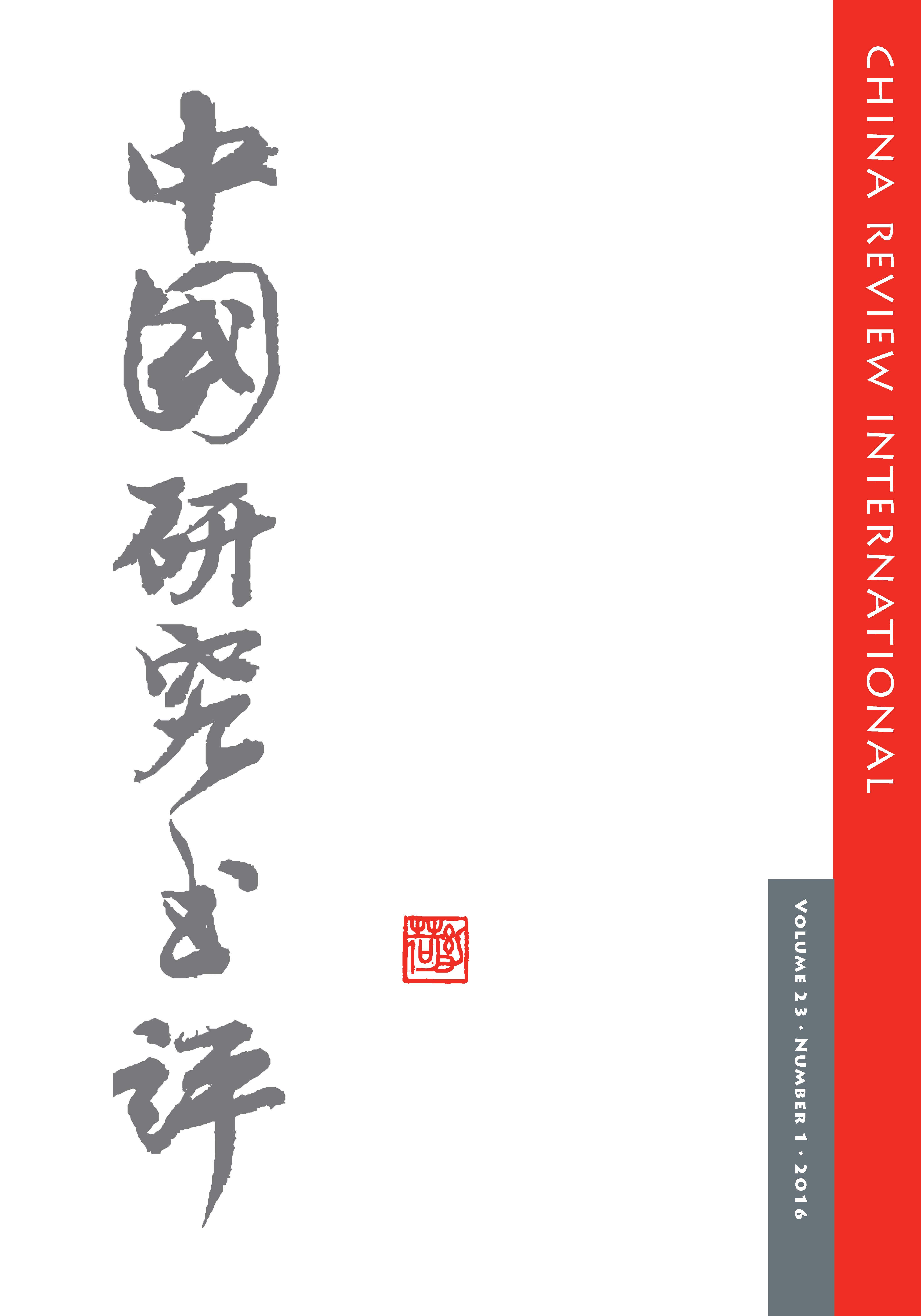
Every quarter, China Review International presents timely, English-language reviews of recently published China-related books and monographs. Its multidisciplinary scope and international coverage make it an indispensable tool for all those interested in Chinese culture and civilization, and enable the sinologist to keep abreast of cutting-edge scholarship in Chinese studies.
Individual and institutional subscriptions available through UH Press.
China Review International publishes reviews of recent scholarly literature and “state-of-the-art” articles in all fields of Chinese studies. Reviews are generally published by invitation only; however, unsolicited reviews will be considered for publication based on merit and guidelines can be found here.
The University of Hawai‘i Press now distributes the digital open-access journal, Asian / Pacific Island Nursing Journal published by the Asian American / Pacific Islander Nurses Association, Inc. (AAPINA). The complete content of the journal is freely available online at https://kahualike.manoa.hawaii.edu/apin/.
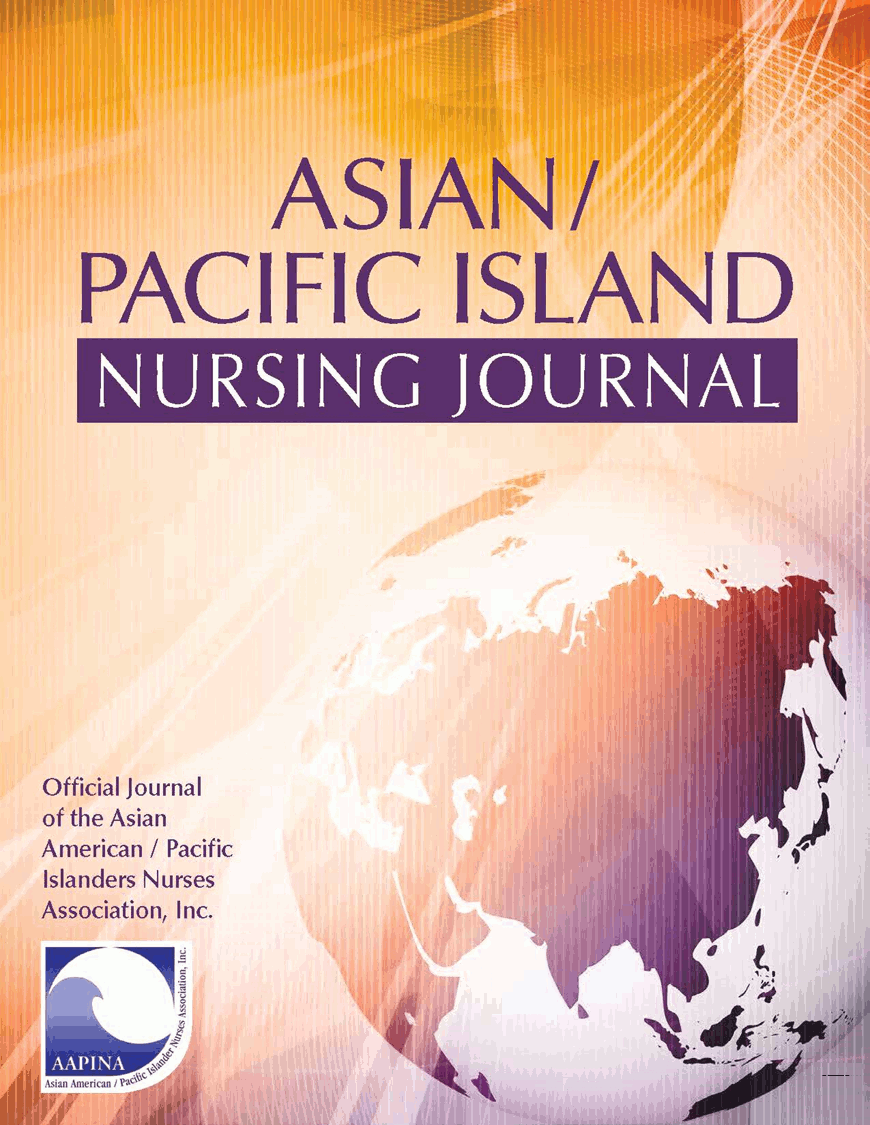 Edited by Jillian Inouye, PhD, FAAN from the University of Hawai‘i, John A Burns School of Medicine and School of Nursing & Dental Hygiene (emeritus), the Asian/Pacific Island Nursing Journal is the only journal focused specifically on health and health care of and for this population. The journal features research papers, empirical and theoretical articles, editorials, abstracts of recent dissertations, and conference summaries that relate to nursing care written by scientists and researchers in nursing and the social sciences.
Edited by Jillian Inouye, PhD, FAAN from the University of Hawai‘i, John A Burns School of Medicine and School of Nursing & Dental Hygiene (emeritus), the Asian/Pacific Island Nursing Journal is the only journal focused specifically on health and health care of and for this population. The journal features research papers, empirical and theoretical articles, editorials, abstracts of recent dissertations, and conference summaries that relate to nursing care written by scientists and researchers in nursing and the social sciences.
“We are pleased to assist AAPINA in the production and distribution of this important open-access journal,” said Joel Cosseboom, UH Press interim director.
The Asian / Pacific Island Nursing Journal joins UH Press’s extensive list of Hawaiian and Pacific Island studies titles, including The Hawaiian Journal of History, The Contemporary Pacific, and Pacific Science. The journal also joins three other peer-reviewed, open-access journal offerings: Language Documentation and Conservation, Palapala: a journal for Hawaiian language and literature and the Journal of the Southeast Asian Linguistics Society.
The University of Hawai‘i Press supports the mission of the university through the publication of books and journals of exceptional merit. It strives to advance knowledge through the dissemination of scholarship—new information, interpretations, methods of analysis—with a primary focus on Asian, Hawaiian, Pacific, Asian American and global studies. It also serves the public interest by providing high-quality books and resource materials of educational value on topics related to Hawai‘i’s people, culture, and natural environment. Through its publications the Press seeks to stimulate public debate and educate both within and outside the classroom.
About AAPINA
AAPINA serves as the unified voice for Asian American Pacific Islander (AAPI) nurses around the world. AAPINA strives to positively affect the health and well-being of AAPIs and their communities by:
Philosophy East and West vol. 68, no. 2 includes the following scholarly works:
Life without Belief: A Madhyamaka Defense of the Livability of Pyrrhonism
by Robin Brons
Creatio ex nihilo and Ancient Chinese Philosophy: A Revisiting of Robert Neville’s Thesis
by Yonghua Ge
Giovanni Pico della Mirandola, Johanan Alemanno, al-Ghazālī’s The Niche
of Lights
by Scott Michael Girdner
Promising Across Lives to Save Non-Existent Beings: Identity, Rebirth, and the Bodhisattva’s Vow
by Stephen E. Harris
Kumārila and Knows-Knows
by Daniel Immerman
Nishida Kitarō’s Philosophy of Absolute Nothingness (Zettaimu no tetsugaku) and Modern Theoretical Physics
by Agnieszka Kozyra
Sounding out Différance: Derrida, Saussure, and Bhartr. hari
by Charles Li
Tradition and Modernity in Liang Shuming’s Eastern and Western Cultures and Their Philosophies
by Philippe Major
Artistic Production and the Making of the Artist: Applying Nishida Kitarō to Discussions of Authorship
by Kyle Peters
An Approach to Comparative Phenomenology: Nishida’s Place of Nothingness and Merleau-Ponty’s Negativity
by Maria Carmen López Sáenz
The Commentary Tradition on Suhrawardī
by L. W. Cornelis van Lit
Incommensurability and Comparative Philosophy
by Xinli Wang
Plus commentary and discussion, a featured review, print book reviews, books received, and online book reviews.
Find the full text of the issue at Project MUSE
Sign up to receive e-mail alerts about Philosophy East and West
new issues from Project MUSE
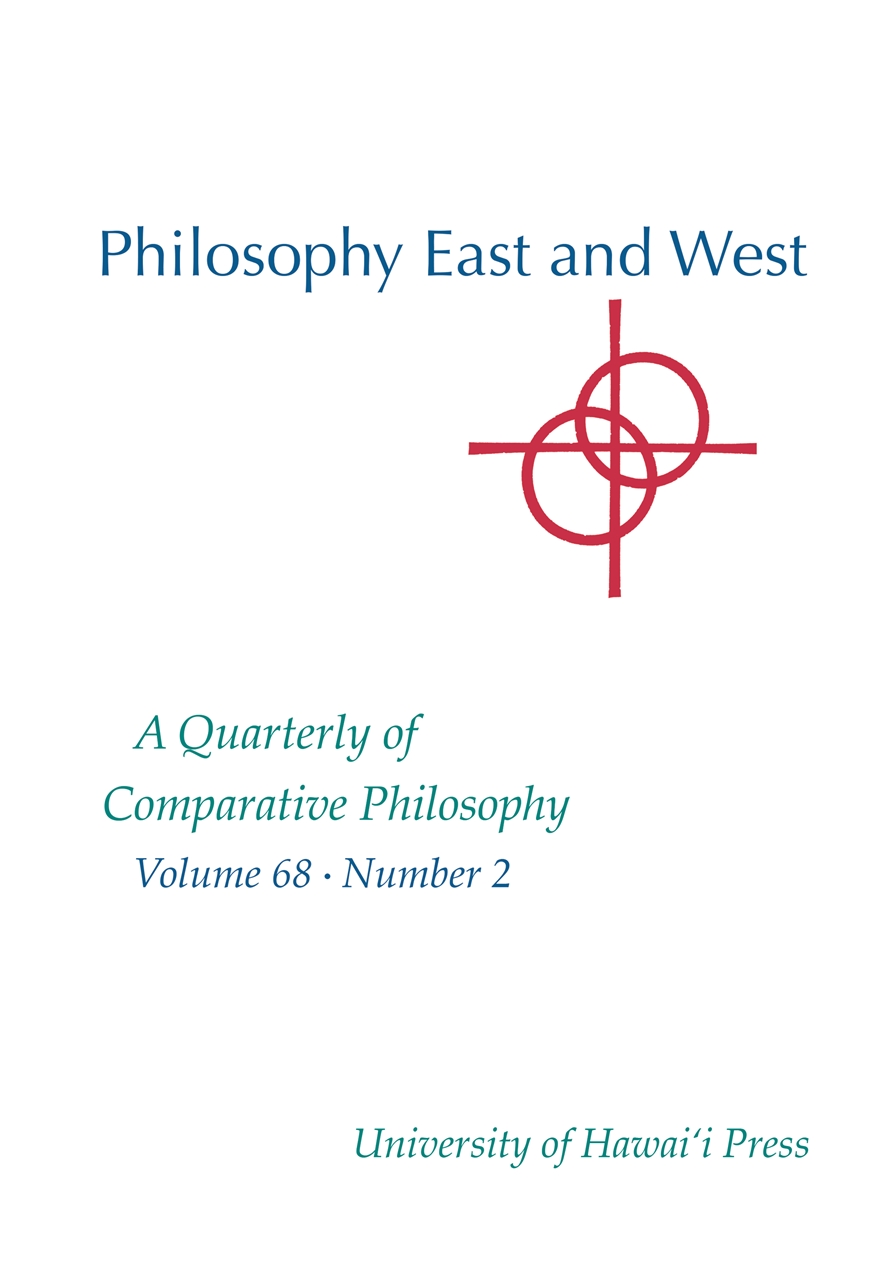 About the Journal
About the JournalPromoting academic literacy on non-Western traditions of philosophy, Philosophy East and West has for over half a century published the highest-quality scholarship that locates these cultures in their relationship to Anglo-American philosophy.
Single issue sales and annual subscriptions for both individuals and institutions available here.
The journal welcomes specialized articles in Asian philosophy and articles that seek to illuminate, in a comparative manner, the distinctive characteristics of the various philosophical traditions in the East and West. See the submission guidelines here.

The Spring 2018 issue of the Asian Theatre Journal opens with a farewell from editor Kathy Foley. Read an excerpt from her final Editor’s Note here:
To make this journal worth reading is the work of many hands and heads around the globe. It requires all the expertise that we as a community of Asian Theatre practitioners and scholars can muster—the years that you, as readers-doers-authors, have spent studying Asian dance, music, movement, text, puppets, language, costumes, staging—they are here. So is expertise you have developed in understanding a culture (your own or someone else’s), the many months you have spent in the archives, the long hours you have watched performances in halls, houses, fields, and temples. This journal is a living community of scholars and artists responding via reporting on arts practice to a changing world.
Shank’s Mare: A Transcultural Journey of Puppetry Creation and Performance
by Claudia Orenstein
Intercultural Theatre and Community in Southeast Asia: The ASEAN Puppet Exchange in Jakarta
by Jennifer Goodlander
The Heritage of Wang Piying Troupe: Shadow Puppetry in North Sichuan
by Tang Rui
Continue reading “Asian Theatre Journal, vol. 35, no. 1 (2018)”
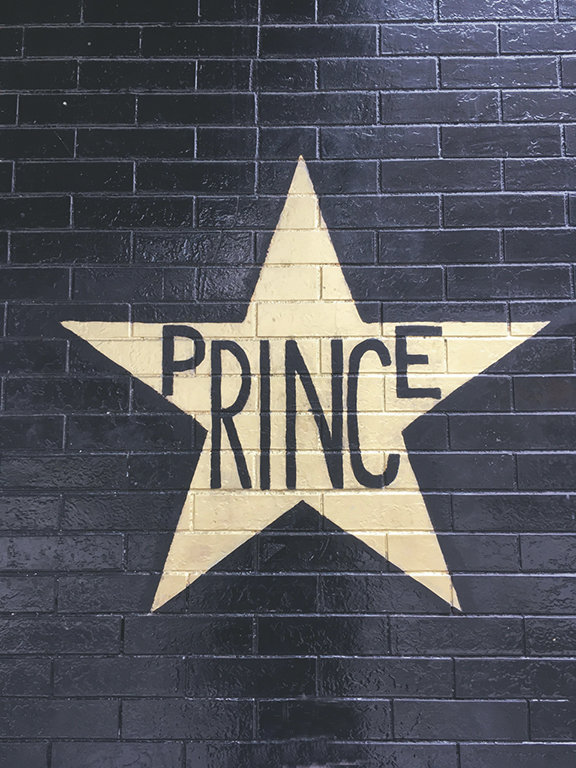
Biography: An Interdisciplinary Quarterly volume 41, number 1 (Winter 2018) arrives with a purple cover and includes a special section, On Prince: A Labor of Love, Loss, and Freedom, guest edited by Andreana Clay.
From the abstract:
With the death of Prince Rogers Nelson on April 21, 2016, many people’s lives were changed forever. In efforts both big and small, those of us left have tried to recall, feel deeply, and write down what his life and death meant to us individually and in community. This special feature explores the feelings of four writers—Andreana Clay, Greg Tate, Steven W. Thrasher, and Scott Poulson-Bryant—who have written about music, race, and Blackness and turn that gaze to Prince and his impact. Each paper was part of the American Studies Association special panel on Prince titled “Prince in Revue.” Here, as we did there, we draw upon a personal and political relationship to Prince in an effort to understand his impact on music, identity, and community.
Editor’s Note by John David Zuern
Introduction: On Prince: A Labor of Love, Loss, and Freedom by Andreana Clay
Prince and the Erotics of Democracy by Greg Tate
Obituarizing Black Maleness, Obituarizing Prince by Steven W. Thrasher
Prince, Queerness, and the Both/And of “Or” by Scott Poulson-Bryant
Keywords: Light Skin-ded Free Black Sex, Girlfriend by Andreana Clay

The second issue in volume 72 of Pacific Science, the official journal of the Pacific Science Association, includes the 14th article in the “Biology and Impacts of Pacific Islands Invasive Species” series, plus seven more research articles.
Preview volume 72, number 2 below and find a list of all articles available on BioOne and Project MUSE.
Biology and Impacts of Pacific Islands Invasive Species. 14. Sus scrofa, the Feral Pig (Artiodactyla: Suidae) by Nathaniel H. Wehr, Steven C. Hess, and Creighton M. Litton
Gut Check: Predatory Ecology of the Invasive Wrinkled Frog (Glandirana rugosa) in Hawai‘i by Melissa J. Van Kleeck, Brenden S. Holland
Speciation and Biogeography in the Hawaiian Endemic Genus Kokia (Malvaceae: Gossypieae) by Clifford W. Morden and Mitsuko Yorkston
Origin, Genetic Diversity, and Population History of a Marine Population (Chanidae: Chanos chanos) in an Enclosed Lagoon in French Polynesia by Erwan Delrieu-Trottin, Valentina Neglia, Magali Verducci, and Serge Planes
Spatial Variation in a Shallow-Water Sponge-Dominated Reef in Timor-Leste (East Timor) by Elizabeth S. Farnham and James J. Bell
First Record of Lepidopora (Hydrozoa: Stylasteridae) from the North Pacific Ocean with Description of a New Species by Daniela Pica, Giorgio Bavestrello, and Stefania Puce
A New Host and Range Record for the Gall Crab Fungicola fagei as a Symbiont of the Mushroom Coral Lobactis scutaria in Hawai‘i by Bert W. Hoeksema, Roland Butôt, and Jaaziel E. García-Hernández
Land Snails of Dåno′ (Cocos Island), Mariana Islands by Alexander M. Kerr and G. Curt Fiedler
New Information on Distribution and Habitat Preferences of the Leopard Skink, Lacertoides pardalis, across the Ultramafic Surfaces of Southern New Caledonia by Ross A. Sadlier, Gerry Swan, Stephane Astrongatt, and Stephane McCoy
…plus Association Affairs from the PSA.
Find the full text of the issue at BioOne
Browse the TOC and read full text online at Project MUSE

Appearing quarterly since 1947, Pacific Science is an international, multidisciplinary journal reporting research on the biological and physical sciences of the Pacific basin. It focuses on biogeography, ecology, evolution, geology and volcanology, oceanography, paleontology, and systematics.
Individual subscription is by membership in the Pacific Science Association. Institutional subscriptions available through UH Press.
Contributions to the biological and physical sciences of the Pacific area are welcomed from authors in all parts of the world. See Pacific Science‘s submission guidelines for details.

New uploads have been added to the latest edition of the National Foreign Language Resource Center’s free and open-access journal Language Documentation & Conservation volume 12.
The endangered state of Negidal: A field report
Brigitte Pakendorf & Natalia Aralova, pp. 1-14
Orthography development for Darma (The case that wasn’t)
Christina Willis Oko, pp. 15–46
Review of Tone in Yongning Na: Lexical tones and morphotonology (Studies in Diversity Linguistics 13)
Maria Konoshenko, pp. 47–52
Contact languages around the world and their levels of endangerment
Nala H. Lee, pp. 53–79
Forced Alignment for Understudied Language Varieties: Testing Prosodylab-Aligner with Tongan Data
Lisa M. Johnson, Marianna Di Paolo & Adrian Bell, pp. 80–123
Kratylos: A tool for sharing interlinearized and lexical data in diverse formats
Daniel Kaufman & Raphael Finkel, pp. 124–146
Single-event Rapid Word Collection workshops: Efficient, effective, empowering
Brenda H. Boerger & Verna Stutzman, pp. 147–193
Review of Lakota Grammar Handbook : a pedagogically orientated self-study reference and practice book for beginner to upper-intermediate students
Bruce Ingham, pp. 194–203
Find the full text of the issue at the LD&C webpage
Language Documentation & Conservation is a free open-access journal on issues related to language documentation and revitalization.
Instructions for submission can be found on the Language Documentation & Conservation‘s website.
Although Language Documentation & Conservation is a free online journal, subscribers are notified by email when a new issue is released. Subscribe to LD&C here.

Biography‘s 2017 International Year in Review features life writing updates from México, South Africa, India, and more countries.
According to the editors, “The International Year in Review is a collection of short, site-specific essays by scholars from around the world on the year’s most influential publications in life writing in the countries, regions, and languages in which they specialize. This year’s International Year in Review includes entries from Australia, Brazil, Burkina Faso, Canada, China, Colombia, Curaçao, Finland, France, Iceland, India, Italy, Korea, México, the Netherlands, Poland, Romania, South Africa, Spain, and the UK, along with two essays from the US, one on biography and one on memoir.”
The fourth issue in this quarterly volume also includes the Annual Bibliography of Works About Life Writing in 2016-2017, compiled by Sam Ikehara and Aiko Yamashiro.
Read more about the process of collecting this issue’s materials in the Editors’ Note.
Find the full text of the issue at Project MUSE
Sign up to receive e-mail alerts about Biography new issues from Project MUSE
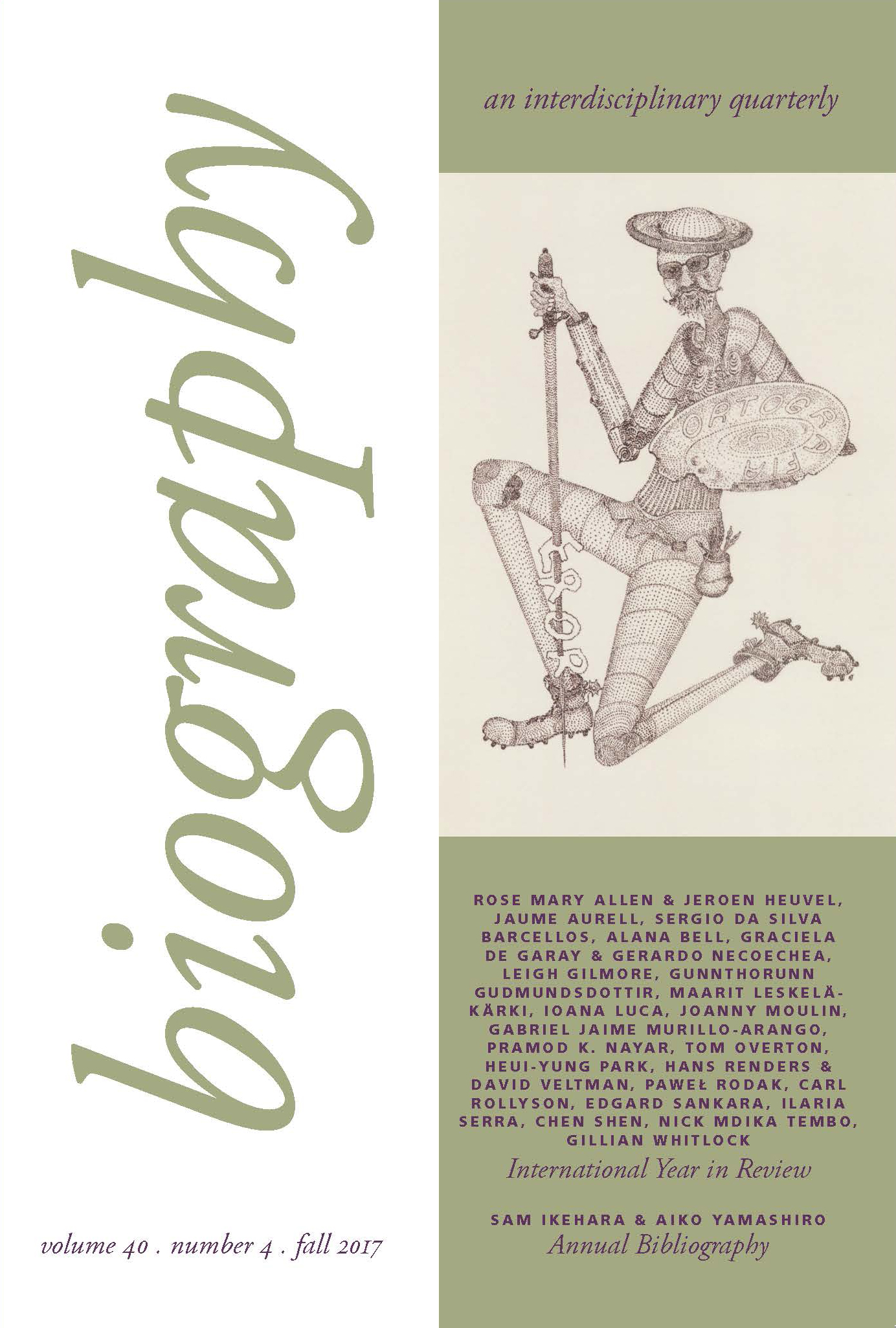 About the Journal
About the JournalFor over thirty years, Biography: An Interdisciplinary Quarterly has explored the theoretical, generic, historical, and cultural dimensions of life-writing.
Single issue sales and annual subscriptions for both individuals and institutions available here.
Unsolicited manuscripts between 2,500 to 7,500 words are welcome. Email inquiries and editorial correspondence to [email protected].
Volume 23 of China Review International begins with four featured reviews and a response, along with 15 more reviews of scholarly literature in Chinese studies.
Mixed with All the Hokum and Bally Hooey: ‘Chinese Food’ and America (reviewing Haiming Liu’s From Canton Restaurant to Panda Express: A History of Chinese Food in the United States) Reviewed by Shiamin Kwa
Literary Archaism, Personal Expression and Self-Cultivation in Ming China: Li Mengyang and his World (reviewing Chang Woei Ong’s Li Mengyang, the North-South Divide, and Literati Learning in Ming China) Reviewed by Richard John Lynn
Toward a More Inclusive Definition of Chinese Painting (reviewing Craig Clunas’s Chinese Painting and Its Audiences) Reviewed by Lothar von Falkenhausen
Peace Dynamics of East Asia (reviewing Explaining the East Asian Peace: A Research Story by Stein Tønnesson and Debating the East Asian Peace: What it is. How it came about. Will it last? edited by Elin Bjarnegård and Joakim Kreutz; both distributed by UH Press from NIAS Press) Reviewed by Alan Hunter
John C. Didier’s response to Michael Saso’s review of In and Outside the Square: The Sky and the Power of Belief in Ancient China and the World, c. 4500 b.c.-a.d. 200, 3 Volumes, Sino-Platonic Papers, No. 192, in China Review International vol. 16, no. 4 (2009)
Song-Chuan Chen’s Merchants of War and Peace: British Knowledge of China in the Making of the Opium War Reviewed by Emily Mokros
James Flath’s Traces of the Sage: Monument, Materiality, and the First Temple of Confucius (available from UH Press) Reviewed by Man Xu
Wu Hung’s Zooming In: Histories of Photography in China Reviewed by Shana J. Brown
Stuart Young’s Conceiving the Indian Buddhist Patriarchs in China (available from UH Press) Reviewed by Hans-Rudolf Kantor
Laura Madokoro’s Elusive Refuge: Chinese Migrants in the Cold War Reviewed by Glennys Young
…plus 10 more reviews and works received.
Browse the full text of the issue at Project MUSE
Sign up to receive e-mail alerts about new issues from Project MUSE
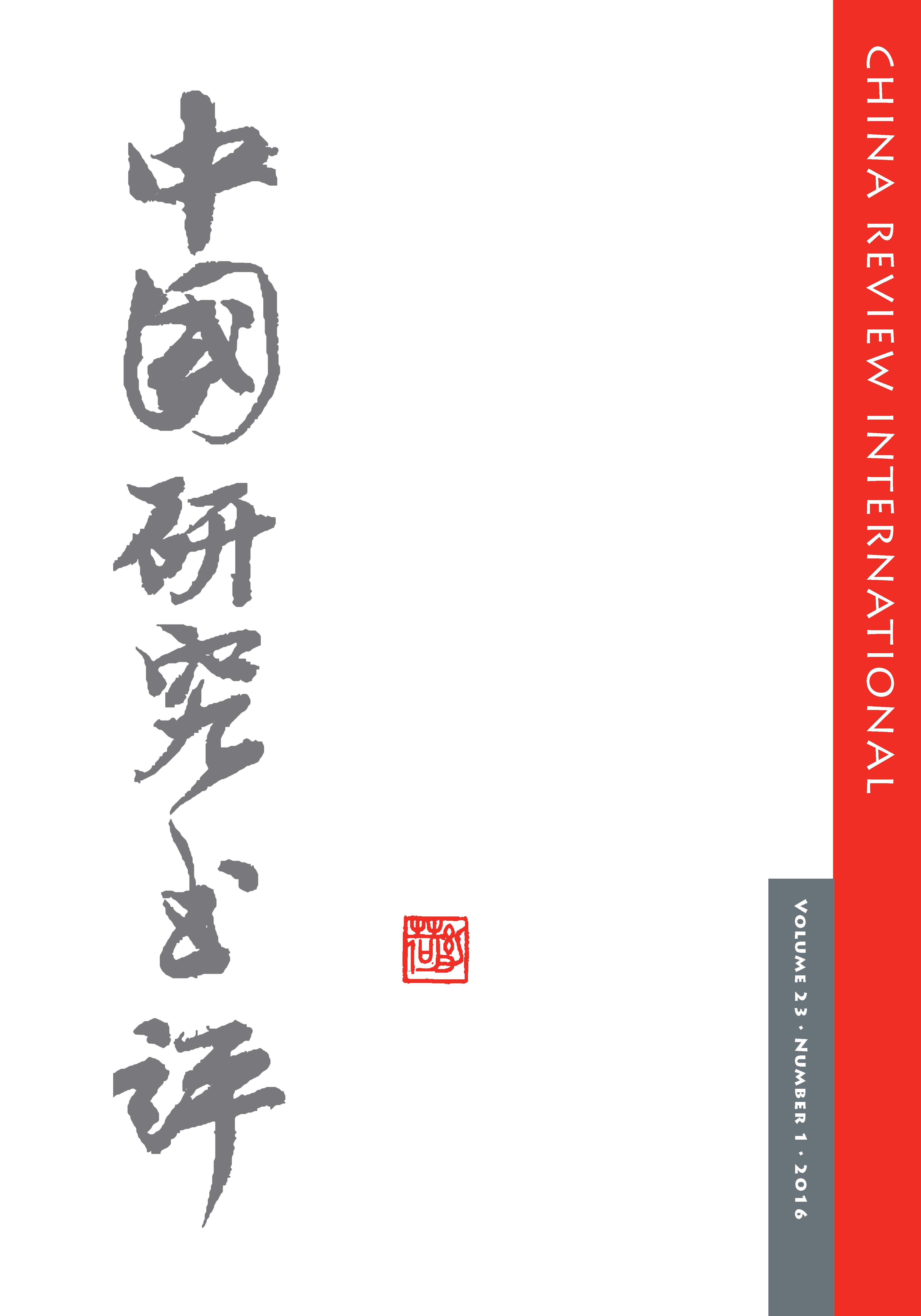
Every quarter, China Review International presents timely, English-language reviews of recently published China-related books and monographs. Its multidisciplinary scope and international coverage make it an indispensable tool for all those interested in Chinese culture and civilization, and enable the sinologist to keep abreast of cutting-edge scholarship in Chinese studies.
Individual and institutional subscriptions available through UH Press.
China Review International publishes reviews of recent scholarly literature and “state-of-the-art” articles in all fields of Chinese studies. Reviews are generally published by invitation only; however, unsolicited reviews will be considered for publication based on merit and guidelines can be found here.
The editors of Biography: An Interdisciplinary Quarterly at the University of Hawai‘i at Mānoa have announced their call for nominations for the 2018 Biography Prize, which is awarded to an UH Mānoa graduate student who demonstrates excellency in life writing.
The Biography Prize winner receives a monetary award and is invited to give a presentation in the Brown Bag Biography lecture series.
Nominations–which should include the student’s name, contact information, and project title–are due to [email protected] by Monday, April 16.
Once nominations are received, the Center for Biographical Research will notify the student to arrange for submission of the project. Candidates may also nominate their own work for the award.
Some candidates will be working on their manuscripts well into April, and this will not be a problem so long as they are able to submit their work by the April 16 deadline.
The candidate should be a PhD or MA student in any graduate department of the University of Hawai‘i at Mānoa (or have graduated with an MA or PhD in December 2017).
The submission can be work that is written for a class, that is a section of a thesis or dissertation, or that is the completed thesis or dissertation. If written for a class, it should be work completed between May 2017 and May 2018 (and not previously submitted for a Biography Prize).
The project should focus on or intersect with any aspect of life writing theory, history, or practice in any medium and discipline
The project should be at least 3,000 to 10,000 words in length: longer projects can be submitted in their entirety, with a particular chapter or section highlighted for consideration. The work should demonstrate knowledge or awareness of central debates and theorizing in the field and study of life writing.
See flyer below or visit CBR’s Facebook page for more details.
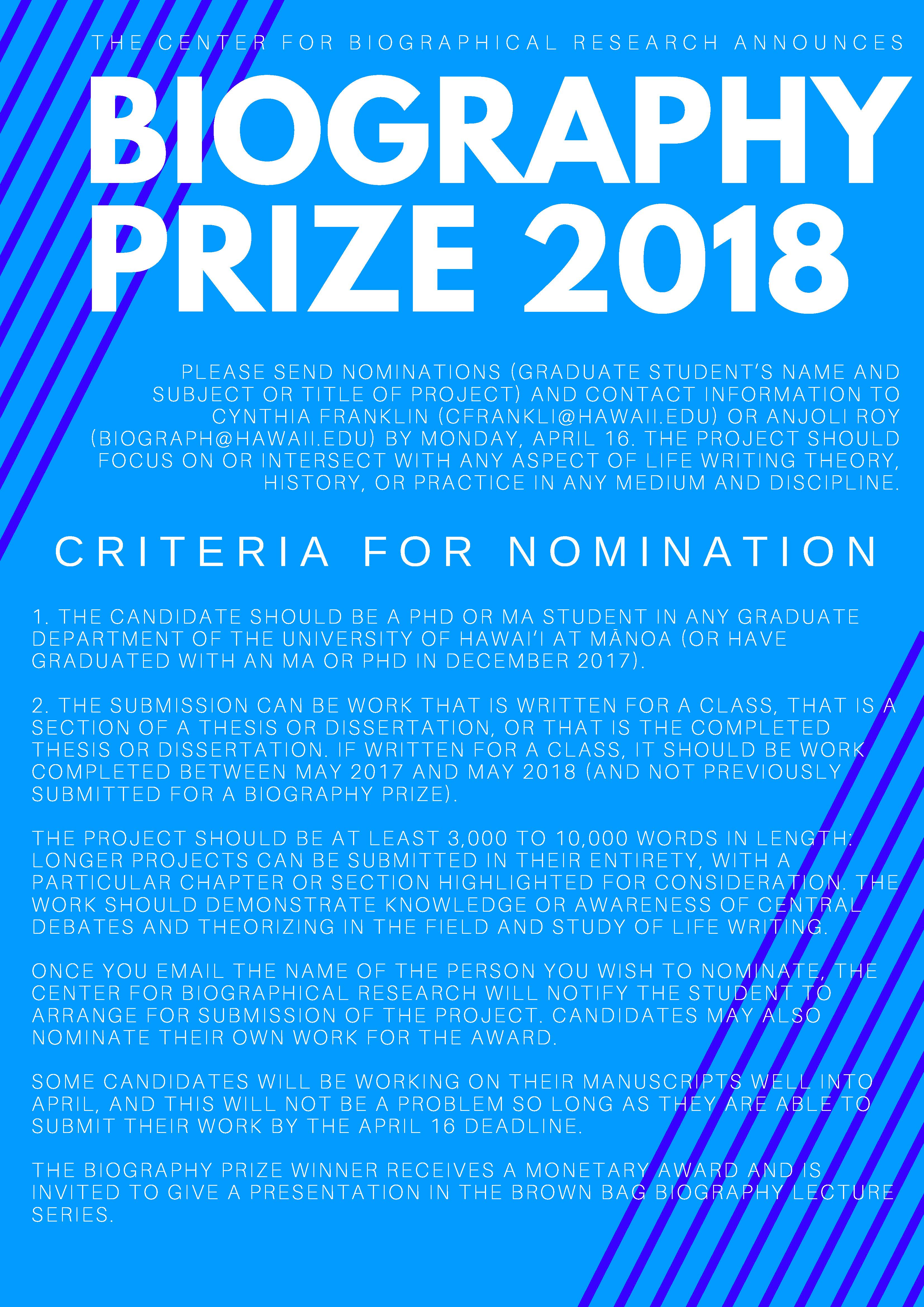
Read Biography archives at Project MUSE
Sign up to receive e-mail alerts about Biography new issues from Project MUSE
Journal of World History volume 29, number 1 arrives with three articles covering Brazil, China, and India:
The British Empire and the Suppression of the Slave Trade to Brazil: A Global History Analysis by Tâmis Parron
The Rise of Nationalism in a Cosmopolitan Port City: The Foreign Communities of Shanghai during the First World War by Tobit Vandamme
Present at the Creation: India, the Global Economy, and the Bretton Woods Conference by Aditya Balasubramanian and Srinath Raghavan
Plus 15 book reviews and books received.
Find the full text of the issue at Project MUSE
Sign up to receive e-mail alerts about Journal of World History new issues from Project MUSE
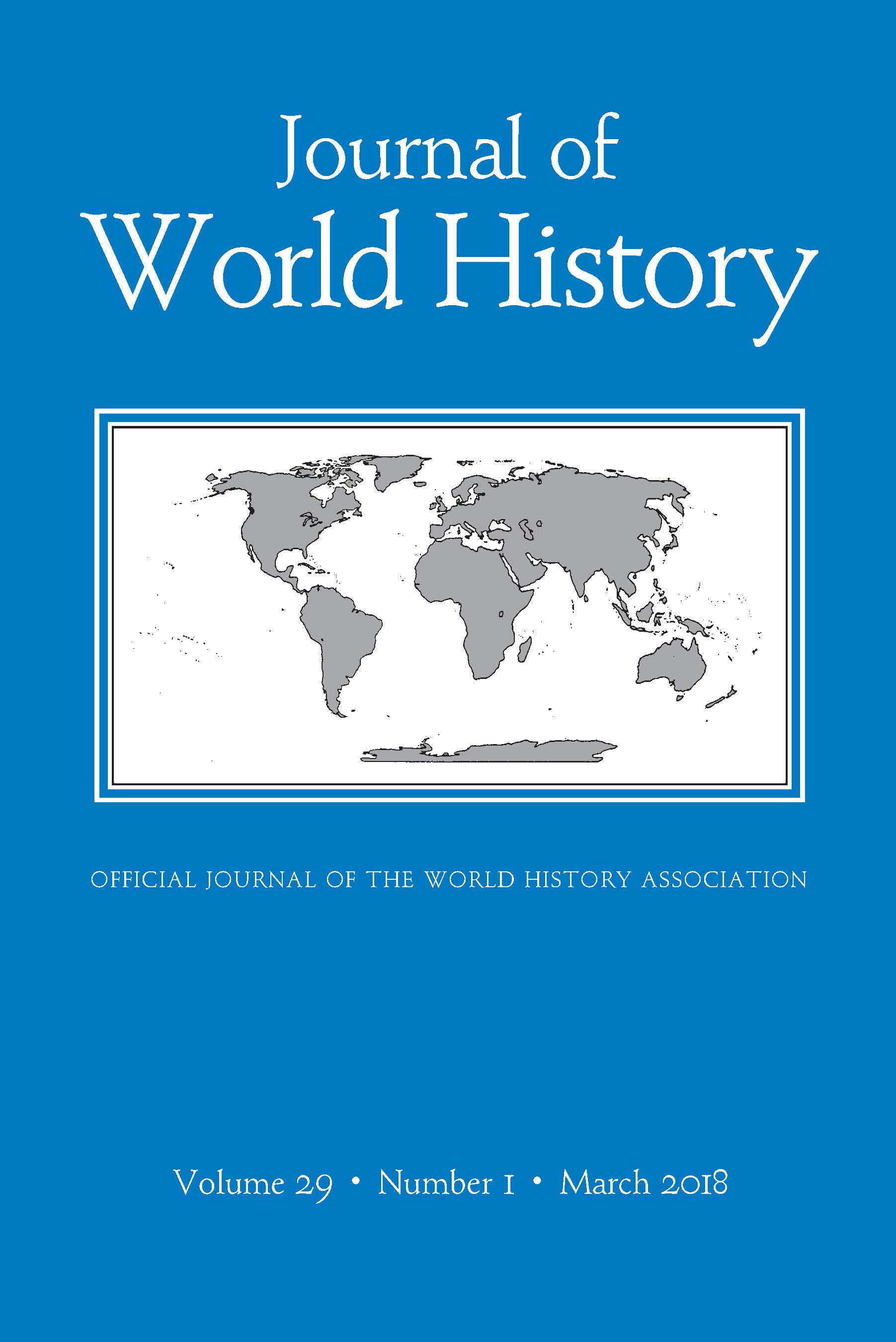 About the Journal
About the JournalThe Journal of World History publishes research into historical questions requiring the investigation of evidence on a global, comparative, cross-cultural, or transnational scale. It is devoted to the study of phenomena that transcend the boundaries of single states, regions, or cultures, such as large-scale population movements, long-distance trade, cross-cultural technology transfers, and the transnational spread of ideas.
Individual subscription is by membership in the World History Association. Institutional subscriptions available through UH Press.
The Journal of World History is proud to introduce a new article and peer review submission system, accessible now at at jwh.msubmit.net.